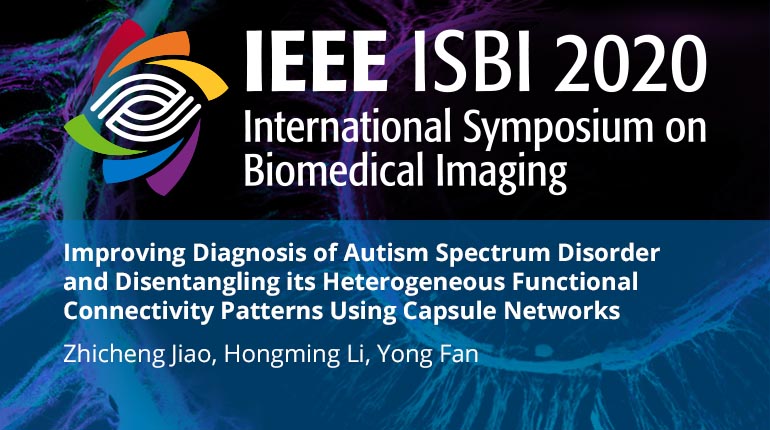
Already purchased this program?
Login to View
This video program is a part of the Premium package:
Improving Diagnosis of Autism Spectrum Disorder and Disentangling its Heterogeneous Functional Connectivity Patterns Using Capsule Networks
- IEEE MemberUS $11.00
- Society MemberUS $0.00
- IEEE Student MemberUS $11.00
- Non-IEEE MemberUS $15.00
Improving Diagnosis of Autism Spectrum Disorder and Disentangling its Heterogeneous Functional Connectivity Patterns Using Capsule Networks
Functional connectivity (FC) analysis is an appealing tool to aid diagnosis and elucidate the neurophysiological underpinnings of autism spectrum disorder (ASD). Many machine learning methods have been developed to distinguish ASD patients from healthy controls based on FC measures and identify abnormal FC patterns of ASD. Particularly, several studies have demonstrated that deep learning models could achieve better performance for ASD diagnosis than conventional machine learning methods. Although promising classification performance has been achieved by the existing machine learning methods, they do not explicitly model heterogeneity of ASD, incapable of disentangling heterogeneous FC patterns of ASD. To achieve an improved diagnosis and a better understanding of ASD, we adopt capsule networks (CapsNets) to build classifiers for distinguishing ASD patients from healthy controls based on FC measures and stratify ASD patients into groups with distinct FC patterns. Evaluation results based on a large multi-site dataset have demonstrated that our method not only obtained better classification performance than state-of-the-art alternative machine learning methods, but also identified clinically meaningful subgroups of ASD patients based on their vectorized classification outputs of the CapsNets classification model.
Functional connectivity (FC) analysis is an appealing tool to aid diagnosis and elucidate the neurophysiological underpinnings of autism spectrum disorder (ASD). Many machine learning methods have been developed to distinguish ASD patients from healthy controls based on FC measures and identify abnormal FC patterns of ASD. Particularly, several studies have demonstrated that deep learning models could achieve better performance for ASD diagnosis than conventional machine learning methods. Although promising classification performance has been achieved by the existing machine learning methods, they do not explicitly model heterogeneity of ASD, incapable of disentangling heterogeneous FC patterns of ASD. To achieve an improved diagnosis and a better understanding of ASD, we adopt capsule networks (CapsNets) to build classifiers for distinguishing ASD patients from healthy controls based on FC measures and stratify ASD patients into groups with distinct FC patterns. Evaluation results based on a large multi-site dataset have demonstrated that our method not only obtained better classification performance than state-of-the-art alternative machine learning methods, but also identified clinically meaningful subgroups of ASD patients based on their vectorized classification outputs of the CapsNets classification model.
 Cart
Cart Create Account
Create Account Sign In
Sign In





